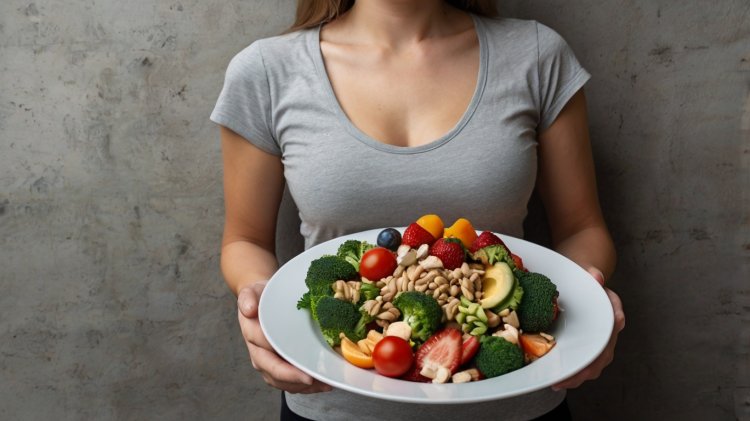CrossFit Diet Plan: Nutrition, Sample Menu, and Benefits
Discover the CrossFit diet, designed to fuel high-intensity workouts and enhance recovery. Learn about its guidelines, sample menu, benefits, and how it supports athletic performance.

CrossFit Diet Plan: Nutrition, Sample Menu, and Benefits
The CrossFit diet is designed to fuel high-intensity workouts while promoting overall health and performance. By emphasizing lean proteins, healthy fats, and low-glycemic carbohydrates, this nutrition plan provides the foundation for energy, recovery, and fitness.
This article explores the principles of the CrossFit diet, foods to eat and avoid, a sample menu, and its benefits and drawbacks, helping you decide if it’s the right plan for your fitness journey.
What Is the CrossFit Diet?
CrossFit recommends eating a balanced diet of meat, vegetables, nuts, seeds, some fruit, little starch, and no sugar. It aligns closely with the Zone Diet, a nutritional approach focused on stabilizing blood sugar and reducing inflammation.
The Zone Diet emphasizes:
-
1/3 Lean Protein: Chicken, fish, lean beef, or plant-based protein.
-
2/3 Healthy Carbohydrates: Non-starchy vegetables and low-glycemic fruits.
-
Healthy Fats: Nuts, seeds, avocado, and olive oil.
By dividing your plate into these proportions, you’re able to manage hunger, enhance performance, and support recovery.
CrossFit Diet Guidelines
Macronutrient Ratios
The CrossFit diet typically follows the Zone Diet’s macronutrient distribution:
-
40% Carbohydrates
-
30% Protein
-
30% Fat
Elite athletes may require a higher fat intake to meet their energy needs.
Using "Blocks"
The Zone Diet uses "blocks" to measure macronutrient intake:
-
1 Carbohydrate Block = 9 grams of carbs
-
1 Protein Block = 7 grams of protein
-
1 Fat Block = 1.5 grams of fat
An average woman requires 11 blocks per day, while an average man needs 14 blocks. These blocks are evenly distributed across meals and snacks.
Foods to Eat
To optimize CrossFit performance, focus on nutrient-dense, unprocessed foods:
Vegetables (Carbohydrates):
-
Broccoli: 1.5 cups cooked = 1 carb block
-
Spinach: 10 cups chopped = 1 carb block
-
Asparagus: 12 cooked spears = 1 carb block
Fruits (Carbohydrates):
-
Blueberries: 1/2 cup = 1 carb block
-
Apples: 1/2 medium = 1 carb block
-
Strawberries: 1 cup sliced = 1 carb block
Proteins:
-
Chicken Breast: 1 ounce cooked = 1 protein block
-
Tofu: 2 ounces firm = 1 protein block
-
Cottage Cheese: 1/4 cup = 1 protein block
Fats:
-
Avocado: 1 tablespoon = 1 fat block
-
Almonds: 3 whole = 1 fat block
-
Olive Oil: 1/3 teaspoon = 1 fat block
Foods to Avoid
Limit or avoid foods that spike blood sugar or offer minimal nutritional value:
-
High-glycemic fruits: Bananas, dates, and raisins.
-
Sugary beverages: Sodas, energy drinks, and juices.
-
Refined grains: White bread, pasta, and pastries.
-
Starchy vegetables: Potatoes, corn, and peas.
-
Processed snacks: Chips, cookies, and candy.
Sample CrossFit Diet Menu
Here’s a sample 11-block menu for an average-sized woman:
Breakfast (3 blocks):
-
Protein: 3/4 cup cottage cheese
-
Carbs: 1.5 cups chopped tomatoes, 1 cup blueberries
-
Fat: 9 almonds
Lunch (3 blocks):
-
Protein: 3 ounces grilled chicken
-
Carbs: 1 cup cooked asparagus, 1/2 cup lentils
-
Fat: 1 teaspoon olive oil
Afternoon Snack (1 block):
-
Protein: 1 large hard-boiled egg
-
Carbs: 2 cups cherry tomatoes
-
Fat: 1 tablespoon avocado
Dinner (3 blocks):
-
Protein: 4.5 ounces baked salmon
-
Carbs: 1.5 cups broccoli, 2 cups collard greens, 1 cup sliced strawberries
-
Fat: 1 teaspoon olive oil
Evening Snack (1 block):
-
Protein: 1 ounce mozzarella cheese stick
-
Carbs: 2 cups bell pepper strips
-
Fat: 5 small olives
Benefits of the CrossFit Diet
-
Stable Blood Sugar: Low-glycemic carbs help maintain steady energy levels.
-
Improved Recovery: Anti-inflammatory foods reduce soreness and enhance performance.
-
Weight Management: Balanced macronutrients support fat loss while preserving muscle mass.
-
Customizable: Can be adapted to fit vegetarian, vegan, or paleo preferences.
Drawbacks of the CrossFit Diet
-
Restrictive: Limits grains, starchy vegetables, and high-glycemic fruits.
-
Measuring Required: Blocks and portioning may feel tedious.
-
Insufficient Carbs for Some Athletes: May not meet the needs of high-intensity athletes over the long term.
FAQs
1. What is the purpose of the CrossFit diet?
To fuel high-intensity workouts, enhance recovery, and maintain a balanced macronutrient intake.
2. Is the CrossFit diet suitable for beginners?
Yes, beginners can follow this diet by starting with simple meal plans and gradually learning the block system.
3. Can I modify the CrossFit diet to fit my lifestyle?
Absolutely. It can be adapted for vegan, vegetarian, or paleo preferences.
4. Do I need to count blocks forever?
No, but weighing and measuring portions for a week or two helps build portion awareness.
5. Does the CrossFit diet help with weight loss?
Yes, its focus on lean proteins, low-glycemic carbs, and healthy fats supports weight management.
Conclusion
The CrossFit diet, rooted in the Zone Diet, emphasizes balanced macronutrients from whole, unprocessed foods. It’s designed to enhance athletic performance, recovery, and overall health. While it may require initial effort to understand blocks and portions, the long-term benefits can be well worth it for dedicated athletes.










